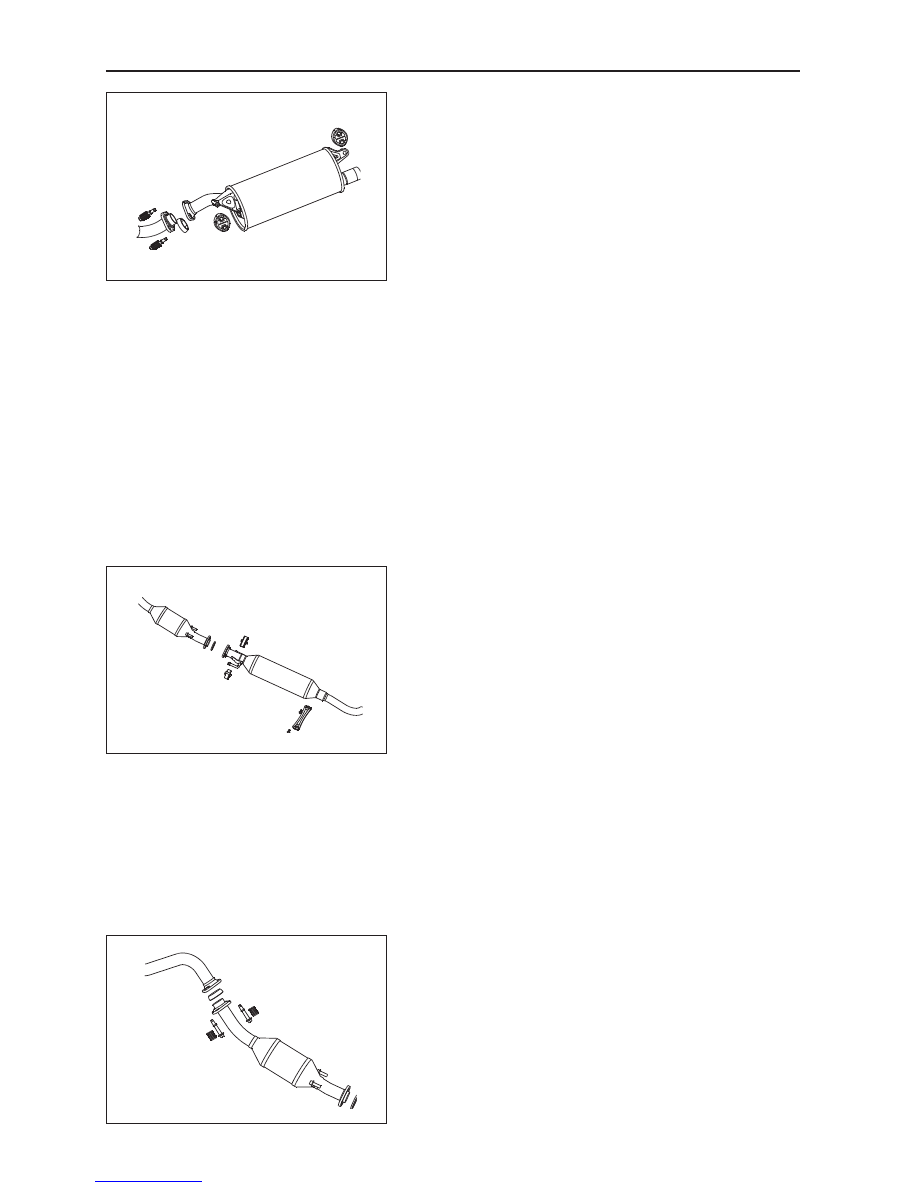Great Wall Florid. Manual - part 9

GWFLORID Maintenance Manual
34
Exhaust System Removal
Caution: Wait at least 30 minutes between the engine
being turned off and the actual removal of any component
of the exhaust system, as to avoid personnel injury due to
hot components.
1. Main muffler assembly removal
(a) First use a No. 13 wrench (open), sleeve, or ratchet
spanner to remove the connecting spring bolt between
the front flange of the main muffler assembly and the
rear flange of the sub-muffler. Then take out the gasket
between the flanges.
(b) Remove the two rubber hangers on the main muffler.
(c) Take down the main muffler assembly.
Caution: The sealing ring between the front flange of
the main muffler assembly and the rear flange of the
sub-muffler is used only for sealing. If reused, it may
cause large deformations and result in a poor sealing
effect. Accordingly, it is suggested not to use a sealing
ring repeatedly. If necessary, only one repetition should
be allowed.
Warning: While performing this kind of maintenance
work, a person should be present to support the main
muffler to avoid injury in case the muffler falls.
2. Sub-muffler assembly removal
(a) Use a No. 14 wrench (open), sleeve, or ratchet wrench
to remove the connecting bolt between the front flange
of the sub-muffler assembly and the rear flange of the
catalyst assembly.
(b) Remove the support of the sub-muffler plate bracket.
(c) Remove the two two-hole rubber hangers between the
sub-muffler and the frame.
(d) Take down the sub-muffler assembly.
Caution: The sealing ring between the front flange of
the sub-muffler and the rear flange of the catalyst as-
sembly is used only for sealing. If reused, it may cause
large deformations and result in a poor sealing effect.
Accordingly, it is suggested not to use a sealing ring
repeatedly. If necessary, only one repetition should be
allowed.
Warning: While performing this kind of maintenance
work, a person should be present to support the sub-
muffler to avoid injury in case the muffler falls.
3. Rear catalytic assembly removal
(a) Remove the connecting spring bolt between the front
flange of the sub-muffler assembly and the rear flange
of the rear catalytic assembly. Then take out the sealing
ring between the flanges.
(b) Take off the rear catalytic assembly.